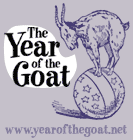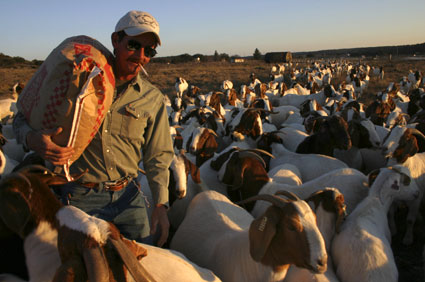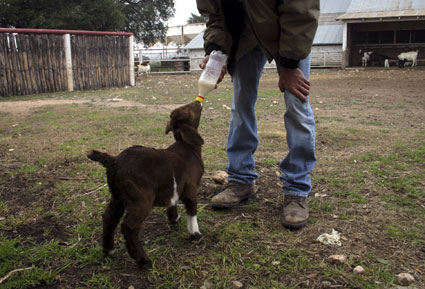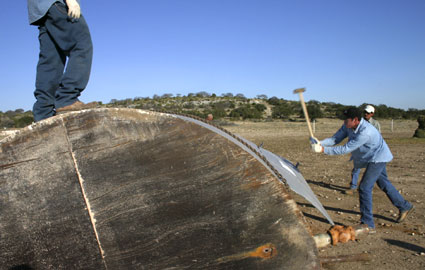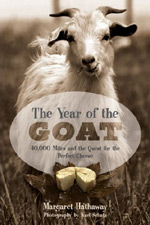Currently, he's using one fenced area of his property to conduct the AMGA's first Buck Performance Test, which was open to any goat breed and any goat breeder, whether they were members of AMGA or not. In this preliminary test, Marvin hopes to determine more about the natural tendencies of each goat. The bucks have been released onto the land, and are left to forage. Every day or two, Marvin comes by with a bag of feed to keep the goats friendly, and over the course of the study, the bucks' weight gain and general health will be carefully monitored.
Though Marvin has a few bucks in the test, most of his animals are in other pastures. Marvin staggers his breeding, and right now is working on some programs for color. He's been focusing lately on the red Boers because of their high value, and on the black headed Boers because he simply likes the way they look. His first batch of kids were arriving when we did, in early February, and a number of does were confined in large pens near his office. Their shelters were equipped with heat lamps and warmed floors, and little red and black kids snuggled together in the corners. Though he's a seasoned rancher, Marvin's delight at the kids was still evident. One, whose mother had belonged to a friend of Marvin's but had died, followed him around as he inspected the pen; finally, Marvin excused himself for a moment and came back with a bottle of warm milk replacement.
In addition to his goats, Marvin is involved in the burgeoning deer hunting market, and has timed feeders placed strategically around his property. Though he prefers to hunt with a bow and arrow, or even occasionally with his hands (he told Karl a wild story that involved scuba gear, a swamp and a giant catfish), Marvin saw the demands of weekend hunters, and has made changes on his ranch to accommodate them. A cabin on his property, in which we stayed when we visited, is lined with mounted deer and a couple of taxidermied champion Boers, and serves as a hunting lodge.
Marvin has also leased the rights to natural gas found under his pastures, and that deal has brought him not only the warmest office we visited, with a roaring gas blaze in the fireplace, but also a few hidden perks that he's been savvy enough to maximize.
Upon arrival at his ranch, we had found Marvin in a pasture with two ranch hands, his stepson Kevin and a young man named Daniel. The three men were using a sledge hammer, heavy chains, and the simple force of gravity to bend a porch into the side of a goat shelter. This shelter had been made from a discarded salt water tank that the gas company had left on Marvin's property. Though he could have had them haul it away, Marvin saw potential. On the dashboard of his truck, he showed us a soda can that he'd used as a scale model of the tank; he'd sliced it in half the long way, then bent a rectangle out of one side. This was exactly what he'd done, with welding equipment, to the tank.
This ingenuity is what has made Marvin a successful rancher. It is also what's made him a successful, though unpaid, lobbyist on behalf of the goat industry. Confronted with a problem, Marvin finds a solution, be it in the form of water tanks or diplomatic emails. His approach is the same: study the predicament, thoroughly research the alternatives, experiment a little, and then proceed.
—MMH
